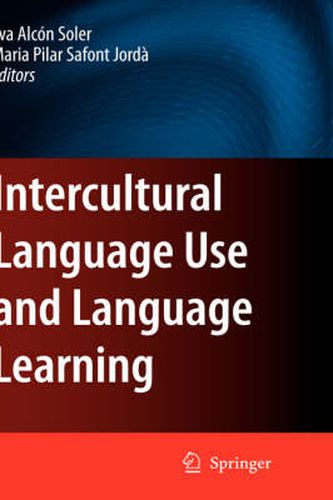Readings Newsletter
Become a Readings Member to make your shopping experience even easier.
Sign in or sign up for free!
You’re not far away from qualifying for FREE standard shipping within Australia
You’ve qualified for FREE standard shipping within Australia
The cart is loading…






This title is printed to order. This book may have been self-published. If so, we cannot guarantee the quality of the content. In the main most books will have gone through the editing process however some may not. We therefore suggest that you be aware of this before ordering this book. If in doubt check either the author or publisher’s details as we are unable to accept any returns unless they are faulty. Please contact us if you have any questions.
Eva Alcon Soler Maria Pilar Safont Jorda Universitat Jaume I, Spain The main purpose of the present book is to broaden the scope of research on the development of intercultural communicative competence. Bearing this purpose in mind, English learners are considered as intercultural speakers who share their interest for engaging in real life communication. According to Byram and Fleming (1998), the intercultural speaker is someone with knowledge of one or more cultures and social identities, and who enjoys discovering and maintaining relationships with people from other cultural backgrounds, although s/he has not been formally trained for that purpose. Besides, possessing knowledge of at least two cultures is the case of many learners in bilingual or multilingual communities. In these contexts, the objective of language learning should then focus on developing intercultural competence, which in turn may involve promoting language diversity while encouraging English as both a means and an end of instruction (see Alcon, this volume). This is the idea underlying the volume, which further sustains Kramsch’s argument (1998) against the native/ non-native dichotomy. Following that author, we also believe that in a multilingual world where learners may belong to more than one speech community, their main goal is not to become a native speaker of English, but to use this language as a tool for interaction among many other languages and cultures.
$9.00 standard shipping within Australia
FREE standard shipping within Australia for orders over $100.00
Express & International shipping calculated at checkout
This title is printed to order. This book may have been self-published. If so, we cannot guarantee the quality of the content. In the main most books will have gone through the editing process however some may not. We therefore suggest that you be aware of this before ordering this book. If in doubt check either the author or publisher’s details as we are unable to accept any returns unless they are faulty. Please contact us if you have any questions.
Eva Alcon Soler Maria Pilar Safont Jorda Universitat Jaume I, Spain The main purpose of the present book is to broaden the scope of research on the development of intercultural communicative competence. Bearing this purpose in mind, English learners are considered as intercultural speakers who share their interest for engaging in real life communication. According to Byram and Fleming (1998), the intercultural speaker is someone with knowledge of one or more cultures and social identities, and who enjoys discovering and maintaining relationships with people from other cultural backgrounds, although s/he has not been formally trained for that purpose. Besides, possessing knowledge of at least two cultures is the case of many learners in bilingual or multilingual communities. In these contexts, the objective of language learning should then focus on developing intercultural competence, which in turn may involve promoting language diversity while encouraging English as both a means and an end of instruction (see Alcon, this volume). This is the idea underlying the volume, which further sustains Kramsch’s argument (1998) against the native/ non-native dichotomy. Following that author, we also believe that in a multilingual world where learners may belong to more than one speech community, their main goal is not to become a native speaker of English, but to use this language as a tool for interaction among many other languages and cultures.